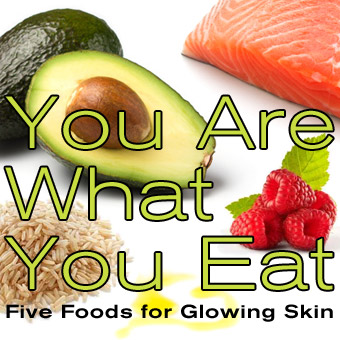Informing you on how to say NO to GMO Foods to keep you and your family safe from the toxins, chemical sensitivities and poisons that are in your food supply. For starters, do not buy any Monsanto endorsed brands or products!
 So you have heard that saying of you are what you eat, well it is absolutely true. Think about the fact that you are a spirit having a human experience, and that your body is a complex biological, mechanical and physical system that contains many functions, systems and organs, hundreds of cells and thousands of atoms which in turn contains millions of energy particles that vibrate at a given frequency. The universe is made up of billions of energy particles in the form of vibration and frequency that either takes on a solid, liquid, gas or transparent matter.
So you have heard that saying of you are what you eat, well it is absolutely true. Think about the fact that you are a spirit having a human experience, and that your body is a complex biological, mechanical and physical system that contains many functions, systems and organs, hundreds of cells and thousands of atoms which in turn contains millions of energy particles that vibrate at a given frequency. The universe is made up of billions of energy particles in the form of vibration and frequency that either takes on a solid, liquid, gas or transparent matter.
OK enough of the supernatural and cosmic talk, let’s get down to the basics of the ways in which you can SHOP SMARTER when you are at your local grocery store, superstore or food market.
Make an educated and informed decision when you pick up that piece of meat from the deli counter, check the label for ingredients of that burger patty and that loaf of bread next time you are at the supermarket.
If you are really stuck on how to shop for fresh and healthy food, refer to the Foods that Resemble Your Body Part as a visual help, after all Mother Nature makes it easier for us to know what is good for us.
 Buying Fresh Produce, Vegetables
Buying Fresh Produce, Vegetables
- Always include a selection of fresh vegetables and fruits in your weekly grocery trip even if it is the all season vegetables like carrots, onions, spinach, cabbage, etc.
- It’s true that it is more expensive to buy fresh vegetables than it is to buy a 99 cent hamburger from McDonalds, but it’s all about taking control of what you and your children eat, and ensuring the most nutritious ingredients.
- Make sure that your children are aware that vegetables do not come from the can, and that they are grown from the soil, from the Earth. Although life may seem very busy and hectic, but it’s important to set an example to your children that they should always strive for a balanced diet.
- Try to expand your selection of hearty greens to include broccoli, Chinese greens, asparagus, snow peas and more exotic vegetables as your body will enjoy the diversity of nutrients.
- Always buy a colorful selection of fruits and vegetables to get all your required vitamins and minerals in your food – red peppers, brown mushrooms, white peaches, yellow beans, etc.
- Try to include a variety of fresh herbs and spices to your diet – rosemary, basil, mint, garlic, ginger, etc.
Buying Meat
- When buying meat, always try to buy it in its freshest form i.e. not processed like ground beef as artificial ingredients can be added as part of the grounding process – look for organic if possible.
- Look for locally raised beef, pork or chicken where possible.
- Try to stay away from the big brand names, the “food inc.” labels and the like. Check the sell by date, also look at the freshness of the meat.
- When storing and handling meat always remember to be sure not to have any cross contamination with other food or objects when preparing or cooking the meat in your kitchen.
Buying Chicken
- When buying chicken, try to obtain unprocessed chicken where possible. The whole chicken would be recommended as opposed to buying a packet of thighs or drumsticks.
- White meat is more healthy, however when it comes to whether the chicken has had growth hormones, you would be better off buying organic or free range chicken where possible.
 Buying Convenient, Preserved or Frozen Foods
Buying Convenient, Preserved or Frozen Foods
- If you happen to be buying chicken strips or fish sticks, be sure that the contents are real white chicken or real fish.
- Look out for the content fillers and artificial ingredients that are mixed into the “processed” food.
- If you are buying preserved canned goods, check the labels for actual ingredients.
- Try to look for canned goods that have minimal to no artificial ingredients, additives, preservatives or chemicals.
- When buying sugar, try to buy more natural alternatives to sugar such as honey, maple syrup or something similar. Avoid artificial sweeteners by all accounts, Aspartame is not something you should be consuming even though it is in chewing gum and yogurt.
Buying Dairy, Milk, Cheeses, Butter
- Choose milk that agrees with you, if you or your family are lactose intolerant it is probably due to a chemical sensitivity or something in the manufacturing process that doesn’t agree with you. Find milk alternatives such as soy, almond or coconut milk where necessary.
- Choose imported cheeses such as Mozzarella, Emanthol, etc if you tend to be lactose intolerant to the regular North American cheeses like cheddar, Monterrey jack, etc.
- Choose free range farm eggs with fortified omega 3 fatty acids.
- Choose butter over margarine even though it may seem more “fattening” as you are better off not having the hydrogenated chemicals that are in margarine.
10 Tips to Say No to GM Foods
1. Buy from companies that treat workers, animals and the environment with respect.
2. When you go to the supermarket, choose foods that are in season.
3. Buy foods that are organic, smart for your health and are not excessive.
4. Know what is in your food, and what you buy, read labels, where thefood comes from..
5. The average meal travels 1500 miles from the farm to the supermarket. Buy foods that are grown locally.
6. Shop at farmer markets, fresh food stores, local artisan bakeries or make a trip to your local farm.
7. Cook a meal with your family and eat together.
8. Everyone has a right to eat healthy food.
9. Ask your school board to provide healthy food lunches for your children.
10. Say grace or be thankful for the food on your plate, ask for food that will keep us and the planet healthy.
Whatever you do, DO NOT WASTE FOOD EVER!

